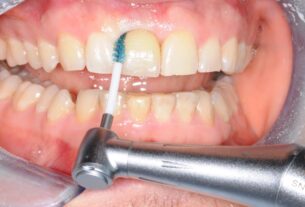Our hands are intricate tools that allow us to perform countless tasks every day. When hand injuries or conditions arise, they can significantly impact our daily lives. Fortunately, hand surgery exists to address a wide range of hand and wrist concerns, restoring function and alleviating pain. This article explores the reasons why hand surgery might be necessary, the different types of procedures performed, and the recovery process.
Beyond Broken Bones: Conditions Treated by Hand Surgery
Hand surgery goes beyond treating fractures. Skilled hand surgeons address various conditions affecting the hand, wrist, and forearm:
- Fractures: Hand surgeons specialize in repairing complex fractures in the fingers, wrist, and hand bones, ensuring proper alignment and healing.
- Arthritis: Worn-down cartilage in the hand or wrist joints can cause pain and stiffness. Hand surgeons perform procedures like joint replacements or fusions to address arthritis.
- Carpal Tunnel Syndrome: This common condition causes pain, numbness, and tingling in the hand due to a compressed nerve in the wrist. Hand surgery can release the compressed nerve and alleviate symptoms.
- Trigger Finger: Inflammation in the finger tendons can cause them to get stuck in a bent position. Hand surgery can release the constricted tendon and restore finger movement.
- Tendon Injuries: Torn or ruptured tendons in the hand can limit finger movement. Hand surgeons can repair damaged tendons to restore function.
- Dupuytren’s Contracture: This condition causes a thickening of the palmar fascia, the tissue under the palm, and can progressively contract fingers. Hand surgery can address this contracture and improve finger mobility.
- Congenital Defects: Hand surgeons can correct congenital hand and wrist malformations present at birth.
Beyond the Operating Room: Types of Hand Surgery Procedures
Hand surgery encompasses a variety of procedures tailored to address specific hand and wrist concerns. Here are some common examples:
- Arthroscopy: This minimally invasive technique uses a small camera to diagnose and treat joint problems within the hand or wrist.
- Open Reduction and Internal Fixation (ORIF): For fractures requiring realignment, surgeons use ORIF to manipulate bone fragments back into place and secure them with implants like plates, screws, or pins.
- Tendon Repair: Torn tendons can be surgically reattached to the bone or other tendons using sutures or anchors.
- Nerve Repair: Damaged nerves in the hand or wrist can be repaired by microsurgical techniques to improve sensation and function.
Beyond Surgery: Recovery and Rehabilitation
Following hand surgery, recovery is crucial for optimal healing and regaining full hand function. This typically involves a combination of factors:
- Immobilization: Splints or casts might be used for a period to immobilize the hand or wrist and promote bone healing.
- Pain Management: Medication can be prescribed to manage pain after surgery.
- Physiotherapy: Working with a hand therapist is essential to regain strength, flexibility, and range of motion in the hand or wrist. The physiotherapy exercises are tailored to the specific surgery performed and your individual needs.
Conclusion
Hand surgery plays a vital role in restoring function and alleviating pain in the hand and wrist. With advancements in surgical techniques and rehabilitation protocols, hand surgery offers effective solutions for a wide range of conditions. If you’re experiencing hand or wrist pain or limitations in movement, consulting a hand surgeon can help determine if surgery is the right course of action for you. Early diagnosis and intervention can lead to a more successful outcome and a faster return to normal hand function.





